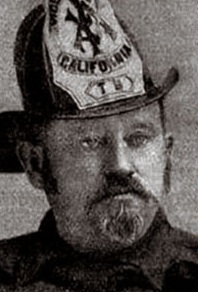A new camera developed in Sweden8+ adult movies - watch free full movies and downloadfaster than any photography gear on the planet.
Researchers at Sweden's Lund University built a crazy-fast camera that can capture a staggering five trillion frames per second, or events as short as 0.2 trillionths of one second. Conventional cameras, by contrast, top out at around 100,000 frames per second
With the new high-speed film camera, the researchers plan to film rapid processes in chemistry, biology, and physics that are otherwise impossible to capture in photos or videos.
SEE ALSO: Scientists store digital files in an unlikely place: DNA"Explosions, plasma flashes, turbulent combustion, brain activity in animals, and chemical reactions — we are now able to film such extremely short processes," Elias Kristensson, a combustion physics researcher and co-inventor of the camera, said in a news release.
Kristensson and his research partner Andreas Ehn plan to use the camera — called FRAME (Frequency Recognition Algorithm for Multiple Exposures) — to film combustion as it occurs at the molecular level, they said.
Combustion is a chemical reaction between a fuel and oxygen, which produces heat. The researchers' ultimate goal is to help make fuel-burning machines (such as car engines, gas turbines, and boilers) more energy-efficient by examining combustion at every fleeting, minuscule stage.
"In the long term, the technology can also be used by industry and others," Kristensson said.
The scientists and his colleagues recently published a preview article of the camera technology in the journal Light: Science & Applications.
The FRAME camera works differently than more conventional models. Most high-speed cameras capture images one by one, in a rapid sequence. But the Swedish creation uses a computer algorithm that captures several coded images in one picture; those are later sorted into a video sequence.
 Original image has been replaced. Credit: Mashable
Original image has been replaced. Credit: Mashable To film a scientific process, such as a chemical reaction, the camera exposes it to light by firing off laser flashes. Each light pulse is given a unique code, and the object reflects those bursts of light, which merge into a single photograph. Next, those images are separated using an encryption key.
The researchers said that in addition to setting a new speed record, the camera is especially exciting because of its ability to film chemical changes in real time. Without this new high speed camera, researchers could only visualize such rapid events by photographing still images of the process, Kristensson explained.
"You then have to attempt to repeat identical experiments to provide several still images, which can later be edited into a movie," he said. "The problem with this approach is that it is highly unlikely that a process will be identical if you repeat the experiment."
The Swedish team said they expect to make more film materials available this fall. Get ready to geek out.
Topics Cameras
(Editor: {typename type="name"/})
 WhatsApp launches 'Advanced Chat Privacy' to protect sensitive conversations
WhatsApp launches 'Advanced Chat Privacy' to protect sensitive conversations
 'Succession' Season 4 ending explained: Who's the new CEO?
'Succession' Season 4 ending explained: Who's the new CEO?
 Literary Stockings, Keats’s Addiction by Sadie Stein
Literary Stockings, Keats’s Addiction by Sadie Stein
 See You There: The Paris Review at the Strand, Tonight! by The Paris Review
See You There: The Paris Review at the Strand, Tonight! by The Paris Review
 NYT Connections Sports Edition hints and answers for April 23: Tips to solve Connections #212
NYT Connections Sports Edition hints and answers for April 23: Tips to solve Connections #212
13 Good Games You Can Play on Laptops and Budget PCs
Arthurian Legend, Literary Restaurants by Sadie Stein
 Arthurian Legend, Literary RestaurantsBy Sadie SteinOctober 10, 2012On the ShelfOxford’s Bodleian Li
...[Details]
Arthurian Legend, Literary RestaurantsBy Sadie SteinOctober 10, 2012On the ShelfOxford’s Bodleian Li
...[Details]
Pornhub just dropped a newly redesigned line of sex toys
 Pornhub is launching a new and fully redesigned line of sex toys on Wednesday, and promoting the lin
...[Details]
Pornhub is launching a new and fully redesigned line of sex toys on Wednesday, and promoting the lin
...[Details]
 Whenever big news breaks, it tends to take over Twitter within minutes. Surprising nobody, the presi
...[Details]
Whenever big news breaks, it tends to take over Twitter within minutes. Surprising nobody, the presi
...[Details]
Inside the Murky Process of Getting Games on Steam
Buy 1 Get 50% 1 for dog Halloween costumes and apparel at Petco
 The following content is brought to you by Mashable partners. If you buy a product featured here, we
...[Details]
The following content is brought to you by Mashable partners. If you buy a product featured here, we
...[Details]
Wordle today: Here's the answer and hints for May 30
 Can't get enough of Wordle? Try Mashable's free version now P
...[Details]
Can't get enough of Wordle? Try Mashable's free version now P
...[Details]
This 'Succession' line gave a sneaky clue as to who would end up as CEO
 Successionis over, and a new king has been crowned.And while Tom Wambsgans (Matthew Macfadyen) wasn'
...[Details]
Successionis over, and a new king has been crowned.And while Tom Wambsgans (Matthew Macfadyen) wasn'
...[Details]
 David V. Johnson ,May 2, 2017 Keeping Hope
...[Details]
David V. Johnson ,May 2, 2017 Keeping Hope
...[Details]
Apple will shut down My Photo Stream service on July 26
 It might be time to upgrade your iCloud storage, as the decade-old My Photo Stream service from Appl
...[Details]
It might be time to upgrade your iCloud storage, as the decade-old My Photo Stream service from Appl
...[Details]
Q&A with tendercare founder and CEO Shauna Sweeney

Trashing Tolkien, Finding Tom Sawyer by Sadie Stein

接受PR>=1、BR>=1,流量相当,内容相关类链接。